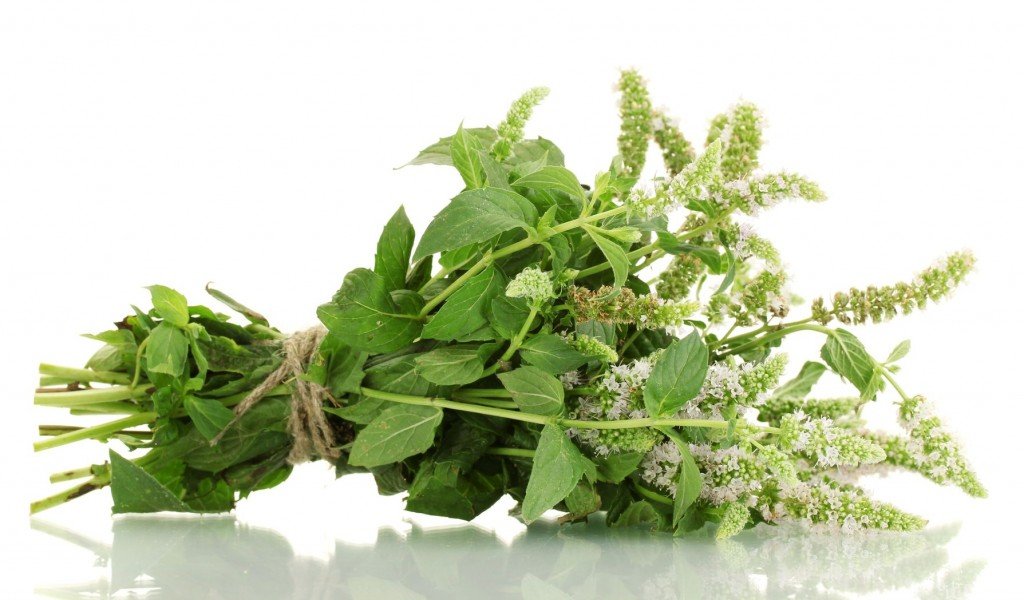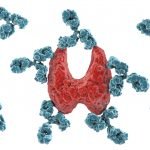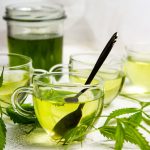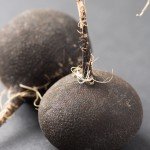Jillian Stansbury, ND
Research is growing regarding the use of rosmarinic acid, a safe and ecologically abundant constituent of common herbs that you probably already know and love. Rosmarinic acid is found in rosemary, Rosmarinus officinalis of course, and in many Lamiaceae (formerly Labiatae) family plants, which are commonly referred to as the mint family, including Coleus species, Lycopus virginia, Lavendula,1 Melissa officianalis,2,3 Nepeta cataria, Ocimum sanctum, Origanum vulgare, Perilla species, Prunella vulgaris, Salvia officinalis, and Thymus vulgaris. These safe and common herbs are in the Nepetoideae subfamily of the very large Lamiaceae family. Recent research is showing many useful medicinal effects for rosmarinic acid, including pronounced anti-inflammatory and antioxidant activity, rendering concentrated dosages useful in the management of hay fever, respiratory allergies, allergic airway diseases, and multiple chemical sensitivity. Otitis media or externa that is chronic and related to underlying allergic disorders may also improve with rosmarinic acid supplementation.
Rosmarinic Acid Is a Caffeic Acid Derivative
Rosmarinic acid is a derivative of caffeic acid and is one of the most abundant and readily available caffeic esters occurring in nature. Caffeic acid itself has many anti-inflammatory and antioxidant properties and is a “mother molecule” from which many organic acids and physiologically active botanical constituents are derived. Rosmarinic acid is most physiologically active in an oxidized form,4 a process that can occur naturally but may also be enhanced by product manufacturers to ensure a potent and effective medicine. Rosmarinic acid is absorbed in the gastrointestinal tract and has been found to accumulate in all major organs but particularly the lungs, explaining some of the folkloric uses of the Lamiaceae family plants for respiratory allergies, coughs, and general mucous congestion in the airways. Rosmarinic acid may also be absorbed by the skin with topical applications; therefore, the substance is also being explored for treatment of eczema and dermal allergies and reactivity.
Studies on the Antiallergy Effects of Rosmarinic Acid
Recent studies5-8 have reported significant anti-inflammatory and antioxidant effects of rosmarinic acid. These studies have shown an ability to scavenge all of the most common respiratory free radicals, including superoxide compounds and hydroxyl groups.9 Rosmarinic acid also inhibits the alternate complement pathways that are often excessive and contributory to the overall pathology in allergic airway disorders.1 Rosmarinic acid is reported to regulate and normalize excessive allergic immunoglobulin response, as well as inflammatory responses of polymorphonuclear leukocytes, in animal studies. Some studies on individual plants containing rosmarinic acid have shown various anti-inflammatory and antiallergy effects. For example, Rosmarinus itself has profound antioxidant effects.10 Salvia officinalis11,12 and Perilla frutescens13 have been found to inhibit lipoxygenase, an enzyme involved in the synthesis of inflammatory prostaglandins. Although the synergistic actions of numerous molecular constituents in whole-plant extracts contribute to the nutritive and medicinal effects of herbs, rosmarinic acid is increasingly being identified as a key contributor to the antiallergy, anti-inflammatory, and immune-modulating effects of many mint family plants.
Perilla as a Source of Rosmarinic Acid
While rosemary, sage, thyme, and other common herbs are most used in Western herbalism, Perilla species are perhaps more common in Asia and the East, where the species has been used to treat asthma and many types of allergic phenomena. There is much scientific study on Perilla that is being published in Korea and Japan. Investigations show similar pronounced antiallergy effect and explain a long-standing tradition of cooking Perilla with seafood or using it as a medicine to antidote allergic reactivity for persons with allergies to fish and shellfish.14 Another line of research is showing that Perilla reduces allergic reactivity in animal models of contact dermatitis and dermal reactivity.14
Antiasthma Effects of Rosmarinic Acid
Asthma has been reported to be increasing in both frequency of occurrence and disease severity worldwide, and researchers believe that this is in part due to ever-increasing exposure to airborne pollutants.15 Animal investigations have shown that rosmarinic acid reduces airway activity when animals are pretreated with rosmarinic acid, followed by exposure to airborne antigens such as diesel exhaust.16 Rosmarinic acid inhibited elevations in inflammatory proteins and interleukins that typically result from such exposures and limited edema and neutrophilic infiltration in the lungs. Exposure to dust mites is another common allergic trigger, and investigations have shown that treatment with rosmarinic acid–containing compounds reduces eosinophilic reactivity and the cytokine eotaxin, a substance involved in the activation of eosinophils.17
To date, there have been 2 small clinical studies18,19 on the antiallergic effect of rosmarinic acid in humans. Researchers investigated the effects of a rosmarinic acid preparation in persons with allergic rhinoconjunctivitis (typical hay fever symptoms). In both studies, patients received the rosmarinic acid compound at 1 of 2 dosages (50 or 200 mg) or a placebo over the course of several weeks. Patients kept symptom logs and were clinically evaluated as to eosinophil counts in nasal swabs, and results showed that patients receiving the highest dosage of rosmarinic acid reported the least itching and watering of the nose and eyes. Objective findings of significantly lower eosinophil and neutrophil counts were also confirmed in the patients receiving rosmarinic acid compared with control subjects.
Rosmarinic Acid Dosage Strategies
Because in human clinical trials the best outcomes were observed at the highest dosages, many investigators believe that optimal results may be obtained with 150 mg of rosmarinic acid per dose (dosed ≥3 times per day), a dosage difficult to obtain by the use of teas and tinctures alone. Whole-plant compounds (teas and tinctures) containing rosmarinic acid may be part of the broader therapeutic approach to treating allergic respiratory conditions, and commercially concentrated rosmarinic acid compounds may be used to deliver higher doses for more severe or stubborn complaints. Rosmarinic acid appears quite safe even at the higher-dosage ranges. Persons with sensitive stomachs or with digestive issues such as ulcerative lesions may experience slight nausea or stomach upset if using concentrated capsules, an adverse effect that may be remedied by simply taking the capsules with a bit of food.
Clinical Applications
For respiratory allergies with prominent eye symptoms, rosmarinic acid and/or its plant sources (Melissa, Thymus, Rosmarinus, Salvia, etc) may be combined with Euphrasia and taken frequently throughout the day. For patients with abundant mucous secretions, the more drying of the mint family plants, Thymus, Salvia, and Rosmarinus, should be consumed frequently throughout the day to dry secretions and offer antiallergy and anti-inflammatory support. For asthma and lower respiratory tract reactivity, rosmarinic acid may be combined with Gingko, Khella (ammi visnaga), and other classic bronchial anti-inflammatory agents. Thymus has become one of my favorite herbs to treat spastic wet coughs, with or without asthma, which I often compound with Drosera and Foeniculum. For dry spastic coughs, one of the lesser-drying rosmarinic acid sources such as Mentha, combined again with Drosera and the moistening cough medicine Tussilago, will often yield stupendous results. For sinusitis with face pain and stuck mucus in the sinuses, I combine Thymus with Armoracia and Euphrasia. For acute wheezing and to help patients wean off of their corticosteroid inhalers, I compound Thymus with Glycyrrhiza, Lobelia, Tylophora, and Khella. A hot tea of N cataria consumed in a hot bath has a diaphoretic effect, which is enhanced by combining the plant with Sambucus flowers and slices of fresh raw Zingiber. I use variations of this recipe for the onset of colds and flu and for those allergic asthmatic individuals in whom every simple cold settles in the lungs and triggers asthmatic symptoms or leads to bronchitis. For the treatment of multiple allergies and sensitivities, one or more of the rosmarinic acid–containing plants may be chosen given the individual patient’s constitution and combined with Tanacetum, Gingko, and gastrointestinal supportive herbs such as Curcuma. For allergic skin phenomena, strong teas of the rosmarinic acid–containing plants may be used topically. Last, for those tough cases involving patients having multiple allergies and severe asthma and using many corticosteroids and other pharmaceutical anti-inflammatory agents, consider a concentrated form of rosmarinic acid to add to your tool kit. Along with antioxidant nutrients, essential fatty acid supplements, and the aforementioned herbal formulas, concentrated rosmarinic acid, like quercitin, appears fated to become a staple in the management of many allergic disorders and may be an effective tool to reduce the need for prescription anti-inflammatory agents and corticosteroid inhalers.
 Jillian Stansbury, ND has practiced in SW Washington for nearly 20 years, specializing in women’s health, mental health and chronic disease. She holds undergraduate degrees in medical illustration and medical assisting, and graduated with honors in both programs. Dr. Stansbury also chairs the botanical medicine program at NCNM and teaches the core botanical curricula, a position she has held for over 18 years. In addition, Dr. Stansbury also writes and serves as a medical editor for numerous professional journals and lay publications, plus teaches natural products chemistry and herbal medicine around the country. At present she is working to set up a humanitarian service organization in Peru and studying South American ethnobotany. She is the mother of two adult children, and her hobbies include art, music, gardening, camping, international travel and studying quantum and metaphysics.
Jillian Stansbury, ND has practiced in SW Washington for nearly 20 years, specializing in women’s health, mental health and chronic disease. She holds undergraduate degrees in medical illustration and medical assisting, and graduated with honors in both programs. Dr. Stansbury also chairs the botanical medicine program at NCNM and teaches the core botanical curricula, a position she has held for over 18 years. In addition, Dr. Stansbury also writes and serves as a medical editor for numerous professional journals and lay publications, plus teaches natural products chemistry and herbal medicine around the country. At present she is working to set up a humanitarian service organization in Peru and studying South American ethnobotany. She is the mother of two adult children, and her hobbies include art, music, gardening, camping, international travel and studying quantum and metaphysics.
References
- López-Arnaldos T, López-Serrano M, Ros Barceló A, Calderón AA, Zapata JM. Spectrophotometric determination of rosmarinic acid in plant cell cultures by complexation with Fe2+ ions. J Anal Chem. 1995;351:2-3.
- Dastmalchi K, Damien Dorman HJ, Oinonen PP, Darwis Y, Laakso I, Hiltunen R. Chemical composition and in vitro antioxidative activity of a lemon balm (Melissa officinalis L.) extract. Food Sci Technol. 2008;41(3): 391-400.
- Carnat AP, Carnat A, Fraisse D, Lamaison JL. The aromatic and polyphenolic composition of lemon balm (Melissa officinalis L. subsp. officinalis) tea. Pharm Acta Helv. 1998;72(5):301-305.
- Auf’mkolk M, Amir SM, Kubota K, Ingbar SH. The active principles of plant extracts with antithyrotropic activity: oxidation products of derivatives of 3,4-dihydroxycinnamic acid. Endocrinology. 1985;116(5):1677-1686.
- Cuvelier ME, Richard H, Berset C. Antioxidative activity and phenolic composition of pilot-plant and commercial extracts of sage and rosemary. J Am Oil Chem Soc. 1996;73(5):645-652.
- Khandwala A, Coutts S, Dally-Meade V, et al. RHC 3288 [1-methyl-2(1,3,4-oxadiazol-2(3H)-one-5-yl) benzimidazole] and related compounds: novel inhibitors of histamine release from rat mast cells and human basophils. Biochem Pharmacol. 1983;32(22):325-333.
- Khandwala A, Van Inwegen R, Coutts S, Dally-Meade V, Youssefyeh RD. Antiallergic activity profile in vitro of RHC 2963 and related compounds. Int J Immunopharmacol. 1983;5(6):491-502.
- Lamaison JL, Petitjean-Freytet C, Carnat A. Medicinal Lamiaceae with antioxidant properties, a potential source of rosmarinic acid. Pharm Acta Helv. 1991;66(7):185-188.
- Ito H, Miyazaki T, Ono M, Sakurai H. Antiallergic activities of rabdosiin and its related compounds: chemical and biochemical evaluations. Bioorg Med Chem. 1998;6(7):1051-1056.
- Erkan N, Ayranci G, Ayranci E. Antioxidant activities of rosemary (Rosmarinus officinalis L.) extract, blackseed (Nigella sativa L.) essential oil, carnosic acid, rosmarinic acid and sesamol. Food Chem. 2008;110(1):76-82.
- Tepe BB, Eminagaoglu O, Akpulat HA, Aydin E. Antioxidant potentials and rosmarinic acid levels of the methanolic extracts of Salvia verticillata (L.) subsp. verticillata and S. verticillata (L.) subsp. amasiaca (Freyn & Bornm.). Food Chem. 2007;100(3):985-989.
- Kamatou GPP, Viljoen AM, Steenkamp P. Antioxidant, antiinflammatory activities and HPLC analysis of South African Salvia species. Food Chem. 2010;119(2):684-688.
- Oh-hashi K, Takahashi T, Watanabe S, Kobayashi T, Okuyama H. Possible mechanisms for the differential effects of high linoleate safflower oil and high a-linolenate perilla oil diets on platelet-activating factor production by rat polymorphonuclear leukocytes. J Lipid Mediat Cell Signal. 1997;17(3):207-220.
- Makino T, Furuta Y, Wakushima H, Fujii H, Saito K, Kano Y. Anti-allergic effect of Perilla frutescens and its active constituents. Phytother Res. 2003;17(3):240-243.
- Madden MC, Richards JH, Dailey LA, Hatch GE, Ghio AJ. Effect of ozone on diesel exhaust particle toxicity in rat lung. Toxicol Appl Pharmacol. 2000;168(2):140-148.
- Sanbongi C, Takano H, Osakabe N, et al. Rosmarinic acid inhibits lung injury induced by diesel exhaust particles. Free Radic Biol Med. 2003;34(8):1060-1069.
- Sanbongi C, Takano H, Osakabe N, et al. Rosmarinic acid in perilla extract inhibits allergic inflammation induced by mite allergen, in a mouse model. Clin Exp Allergy. 2004;34(6):971-977.
- Takano H, Osakabe N, Sanbongi C, et al. Extract of Perilla frutescens enriched for rosmarinic acid, a polyphenolic phytochemical, inhibits seasonal allergic rhinoconjunctivitis in humans. Exp Biol Med. 2004;229:247-254.
- Osakabe N, Takano H, 3, Sanbongi C, et al. Anti-inflammatory and anti-allergic effect of rosmarinic acid (RA); inhibition of seasonal allergic rhinoconjunctivitis (SAR) and its mechanism. Biofactors. 2004;21(1-4):127-131.





